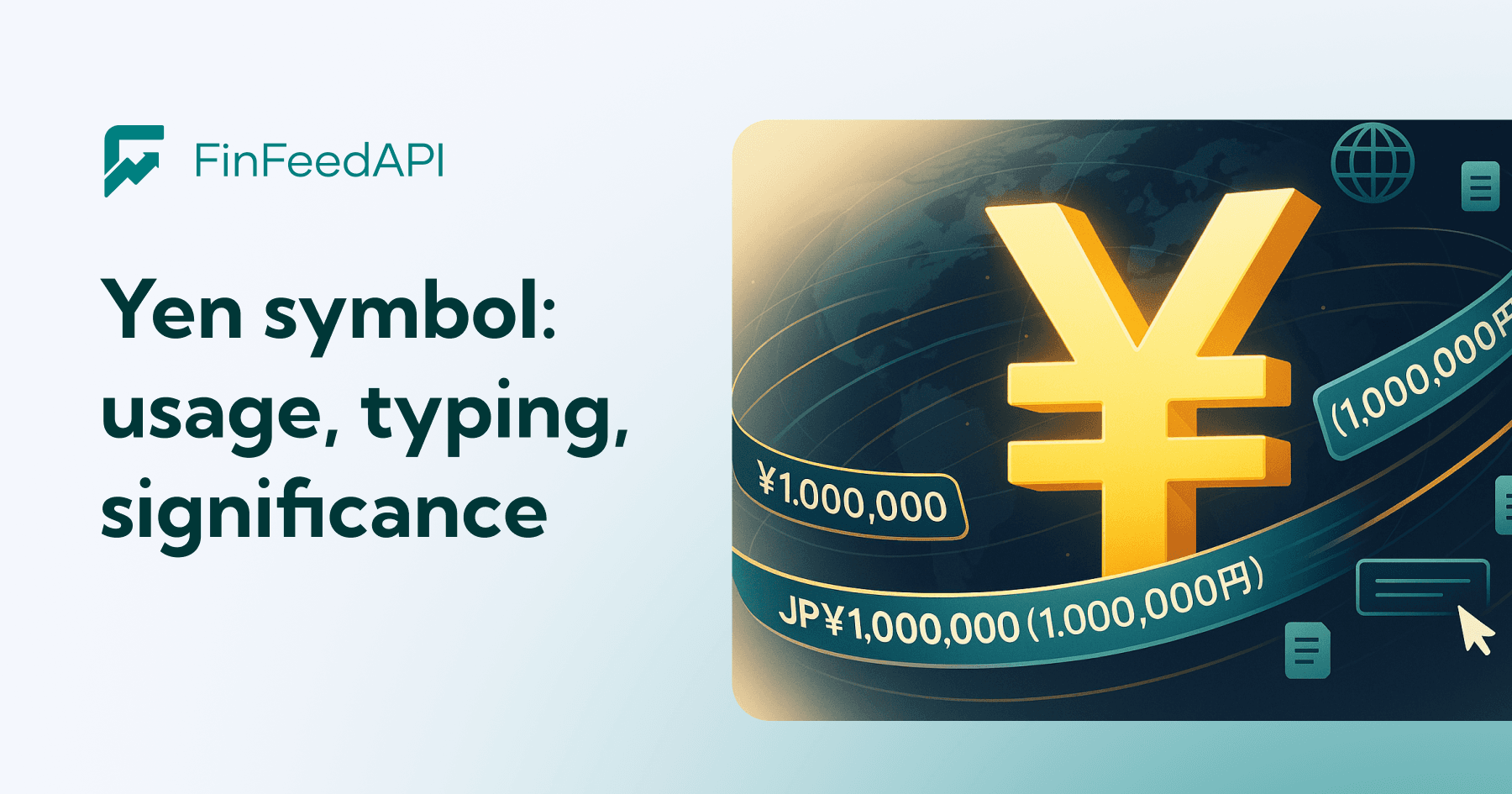Introduction
The yuan sign (¥) is the internationally recognized symbol for the Chinese yuan renminbi, the official currency of the People’s Republic of China. This distinctive symbol appears before numerical values in financial documents, digital displays, and international trade communications worldwide, serving as the standard representation for China’s currency in global commerce.
This guide focuses specifically on the yuan sign symbol itself—its proper usage, technical implementation, and display standards—rather than exchange rates, economic analysis, or broader Chinese currency topics.
What This Guide Covers
This comprehensive resource covers symbol recognition and usage standards, technical encoding requirements, input methods across different systems, display standards for digital and print media, and troubleshooting common implementation issues. It does NOT cover currency exchange rates, economic policy, or investment advice.
Who This Is For
This guide is designed for currency traders, web developers, graphic designers, international business professionals, and anyone working with Chinese currency symbols. Whether you’re creating financial documents for mainland China operations or developing software that displays multiple currencies, you’ll find practical guidance for accurate yuan sign implementation.
Why This Matters
Proper yuan sign usage is essential for accurate financial documentation, international commerce clarity, and professional digital currency displays. With China representing the world’s second-largest economy, incorrect symbol usage can lead to confusion in international contexts, particularly given that the same symbol (¥) represents both Chinese yuan and Japanese yen currencies.
What You’ll Learn:
- Symbol recognition and proper placement standards
- Technical encoding and Unicode implementation
- Input methods for different operating systems
- Professional display requirements and best practices
Understanding the Yuan Sign Symbol
The yuan sign (¥) consists of a capital letter Y with one or two horizontal strokes through it, serving as the universal symbol for Chinese yuan renminbi currency.
This symbol appears before numerical values following international currency notation standards (¥100, not 100¥), similar to how the dollar sign precedes amounts in US currency. The yuan sign represents the base unit of Chinese currency, where one yuan divides into 10 jiao, and each jiao further divides into 10 fen.
Symbol Variations and Standards
The yuan sign appears in two primary forms: single-stroke (¥) and double-stroke variants when available in specific fonts. International style guides consistently recommend placing the symbol immediately before numerical amounts without spacing, following the same conventions used for other major currencies.
This connects to professional currency symbol usage because consistent formatting across documents ensures clarity in international trade and financial communications, particularly when dealing with multiple currencies in the same document.
Yuan Sign vs Other Currency Symbols
The yuan sign shares its appearance with the Japanese yen symbol, creating potential confusion in international contexts. Unlike the Korean won (₩) which features distinct parallel lines, or the US dollar ($) with its vertical strokes, the yen and yuan sign are visually identical in most typefaces.
Building on the previous formatting concepts, this similarity means proper context becomes crucial—financial documents often include currency codes (CNY for Chinese yuan, JPY for Japanese yen) alongside symbols to ensure clarity when both currencies appear in international trade documentation.
Transition: Understanding these fundamental symbol concepts establishes the foundation for implementing yuan signs correctly across digital platforms and professional applications.
Yuan Sign in Digital Applications
Digital implementation of the yuan sign requires specific technical considerations beyond basic symbol recognition, particularly when ensuring compatibility across different systems and regional settings.
Unicode and Character Encoding
The standard yuan sign uses Unicode assignment U+00A5, shared with the Japanese yen symbol. Additionally, Chinese systems often employ the fullwidth variant (U+FFE5) designed specifically for East Asian typography systems where character spacing differs from Western text formatting.
Unlike simple copy-paste operations, proper digital encoding requires UTF-8 support to prevent character substitution errors that could display the yuan sign as alternative characters or question marks across different platforms.
Input Methods and Typing
Windows users can generate the yuan sign through Alt+0165 or specific Alt+Y combinations depending on system configuration. Mac systems use Option+Y as the standard keyboard shortcut for inserting the yuan sign into documents and applications.
Chinese Pinyin input method editors (IMEs) often convert the dollar sign ($) into the fullwidth yuan symbol (¥) automatically, reflecting regional preferences for currency symbol display in simplified Chinese text environments.
Web and Software Display
HTML implementations support yuan sign display through entity codes ¥ and ¥, while CSS requires careful font selection to ensure consistent rendering across browsers and devices. Database storage systems need UTF-8 encoding configuration to prevent character corruption when storing yuan sign data.
Key Points:
- Unicode U+00A5 provides standard yuan sign encoding
- Regional IME systems offer specialized input methods
- Web applications require entity codes for reliable display
Transition: These technical foundations enable professional implementation of yuan signs across business applications and financial documentation systems.
Professional Yuan Sign Implementation
Professional yuan sign usage builds on technical encoding knowledge to meet business documentation standards and international financial communication requirements.
Step-by-Step: Adding Yuan Signs to Financial Documents
When to use this: Creating invoices, contracts, price lists, and financial reports involving Chinese yuan transactions or mainland China business operations.
- Select appropriate variant: Choose standard ¥ for international documents or fullwidth ¥ for Chinese domestic communications based on target audience and regional preferences.
- Position correctly: Place the yuan sign immediately before numerical amounts without spacing (¥500, not ¥ 500) following international currency notation standards.
- Apply consistent formatting: Use the same yuan sign variant throughout entire documents to maintain professional appearance and avoid reader confusion.
- Verify display compatibility: Test document appearance across different devices, software platforms, and operating systems to ensure yuan signs render correctly for all recipients.
Comparison: Half-width vs Full-width Yuan Signs
| Feature | Half-width (¥) | Full-width (¥) |
| Character width | Single-byte spacing | Double-byte spacing |
| Font compatibility | Universal support | East Asian fonts |
| Regional preference | International use | Mainland China domestic |
| Technical encoding | U+00A5 | U+FFE5 |
| Typical use cases | Global business | Chinese documentation |
Half-width yuan signs work best for international business documents and multi-currency displays, while full-width variants align with Chinese domestic formatting expectations and simplified Chinese text layouts.
Transition: Understanding proper implementation prepares you to address common technical and formatting challenges that arise in real-world yuan sign usage.
Common Challenges and Solutions
These issues frequently occur when working with yuan signs across different systems, regions, and international business contexts.
Challenge 1: Yuan Sign Not Displaying Correctly
Solution: Verify Unicode support in document fonts and ensure UTF-8 encoding is enabled in your software applications and web systems.
Font fallback systems may substitute alternative characters when primary fonts lack yuan sign support, causing display inconsistencies across different viewing platforms.
Challenge 2: Confusion Between Yen and Yuan Symbols
Solution: Add currency codes (CNY¥ or JPY¥) or clear contextual identifiers when documents involve both Chinese and Japanese currencies.
International business practices increasingly require explicit currency identification to prevent costly misunderstandings in trade agreements and financial transactions.
Challenge 3: Input Method Inconsistencies
Solution: Configure system input methods for consistent yuan sign generation and establish keyboard shortcuts that work reliably across your organization’s software environment.
IME settings and regional keyboard configurations can produce different yuan sign variants unexpectedly, requiring standardized input procedures for team consistency.
Transition: Addressing these common issues ensures reliable yuan sign implementation across your professional applications and international business communications.
Conclusion and Next Steps
Proper yuan sign usage requires understanding symbol variants, technical encoding standards, and professional display requirements to ensure accuracy in international financial communications and digital currency applications.
To get started:
- Test yuan sign display in your current software applications and document creation systems
- Configure appropriate input methods for your operating system and establish consistent keyboard shortcuts
- Develop style guide standards for yuan sign usage in organizational documents and international communications
Related Topics: You may also want to explore Chinese currency codes (CNY), international financial notation standards for multi-currency documents, and regional typography considerations for East Asian business communications.
Additional Resources
- Unicode Consortium documentation for currency symbol standards and implementation guidelines
- Chinese government recommendations for renminbi symbol usage in official documentation
- International Organization for Standardization (ISO) currency code specifications
- Font compatibility databases for yuan sign rendering across different platforms and devices















